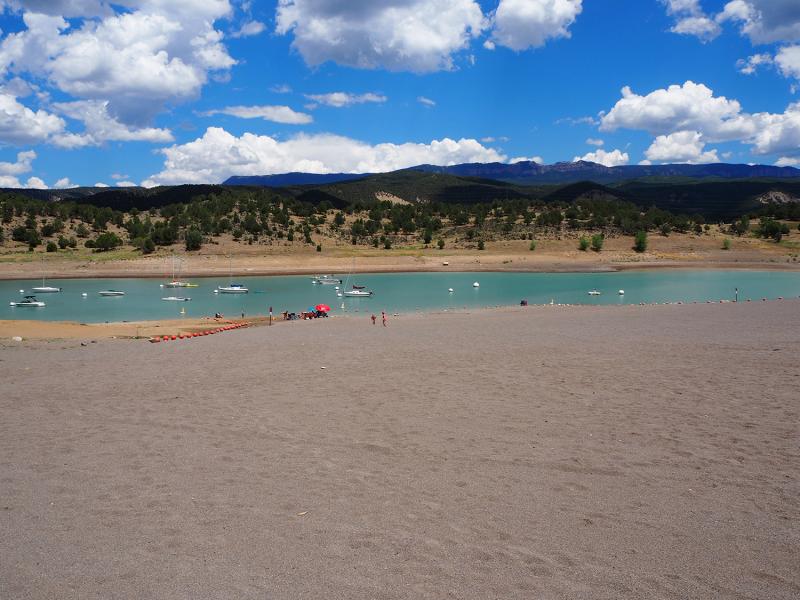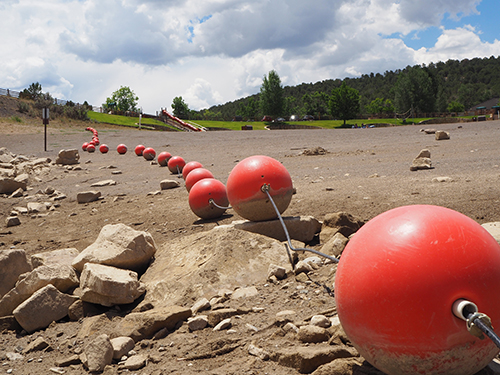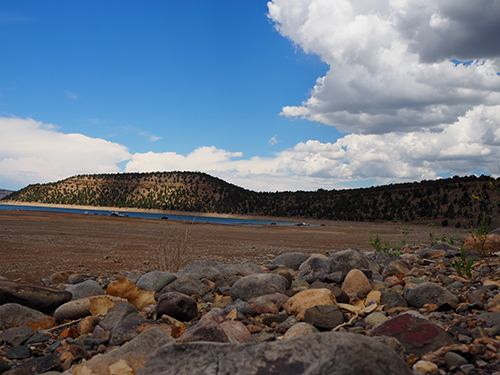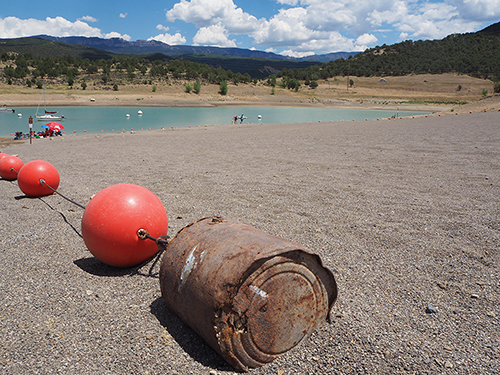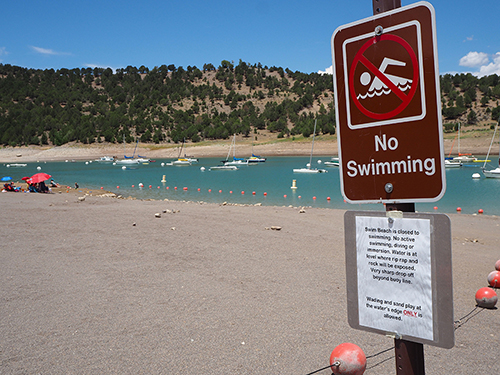In July of this year I nosed my car into a parking space at Ridgeway Reservoir in western Colorado. Even though the reservoir sits at nearly 7,000 feet the summer heat was stifling. The sun—at its highpoint for the day—intensified the aroma of juniper, sagebrush, and pinon pine that encircle the 1000 acre impoundment.
It’s always nice to be home, but I was unsettled by what I saw. Below my vehicle there was a sizable spit of sand. On each side of this “beach,” running more than one hundred yards to the water’s edge, were two strings of bright orange buoys that used to demark the swimming area. The buoys, it turns out, have something important to say about the past and future of American West. Signs that once welcomed swimmers into the cool waters of the reservoir now read “NO ACTIVE DIVING, SWIMMING, OR IMMERSION.” For now at least, this beach is no more. There simply isn’t enough water.
Across the West the summer of 2018 was especially hot and dry. To be clear, drought and aridity are nothing new to this part of the world. For more than a century a good deal of engineering and money have been dedicated to overcoming this fact. Such efforts have made possible the American West we know today; a region studded with grand reservoirs like Powell and Mead and massive urban oases like Denver, Phoenix, and Las Vegas. To millions of people, these cities and waterworks are the American West. These monuments of human ingenuity are as natural as Long’s Peak or the snow on Grand Mesa. But the artifice is beginning to crack.
